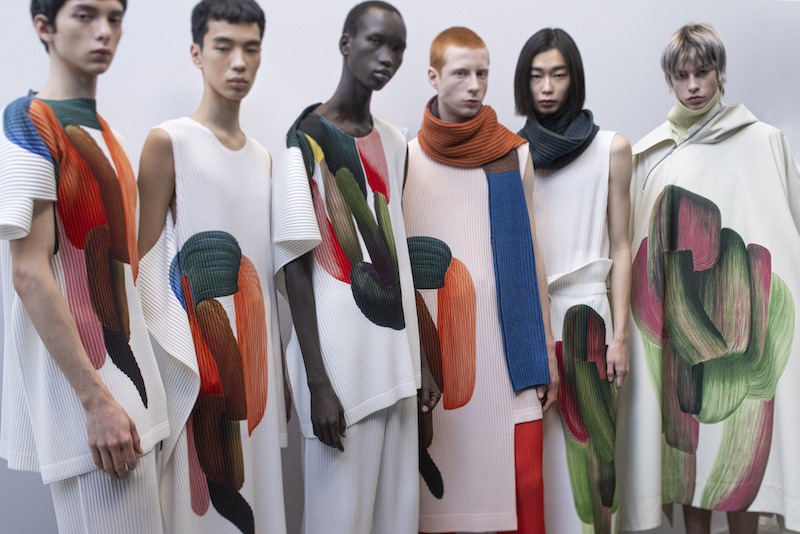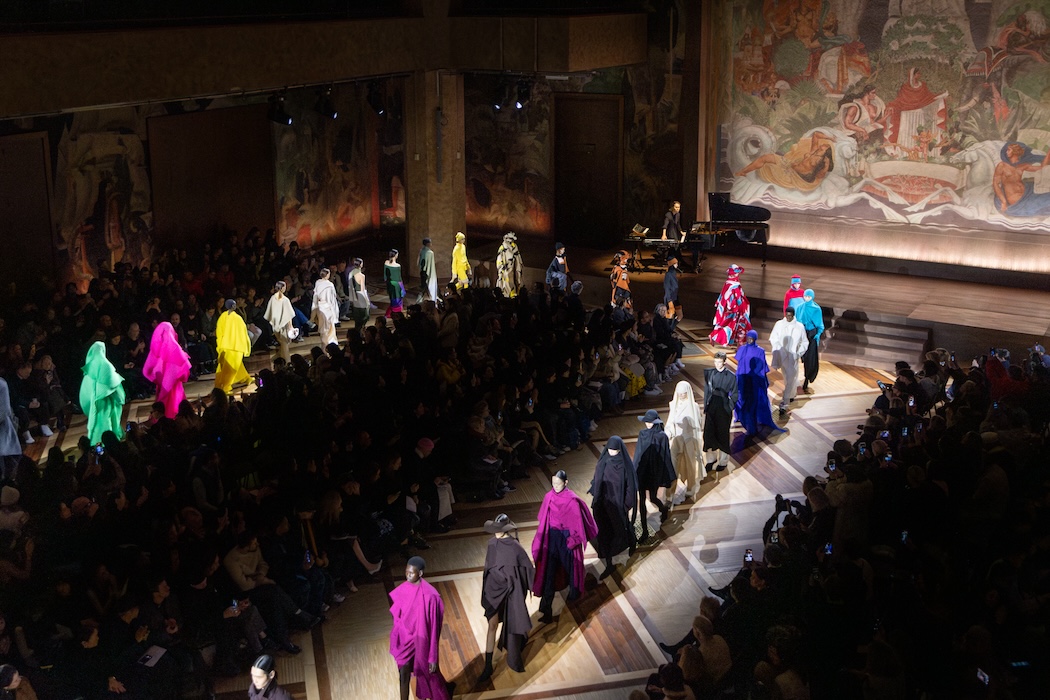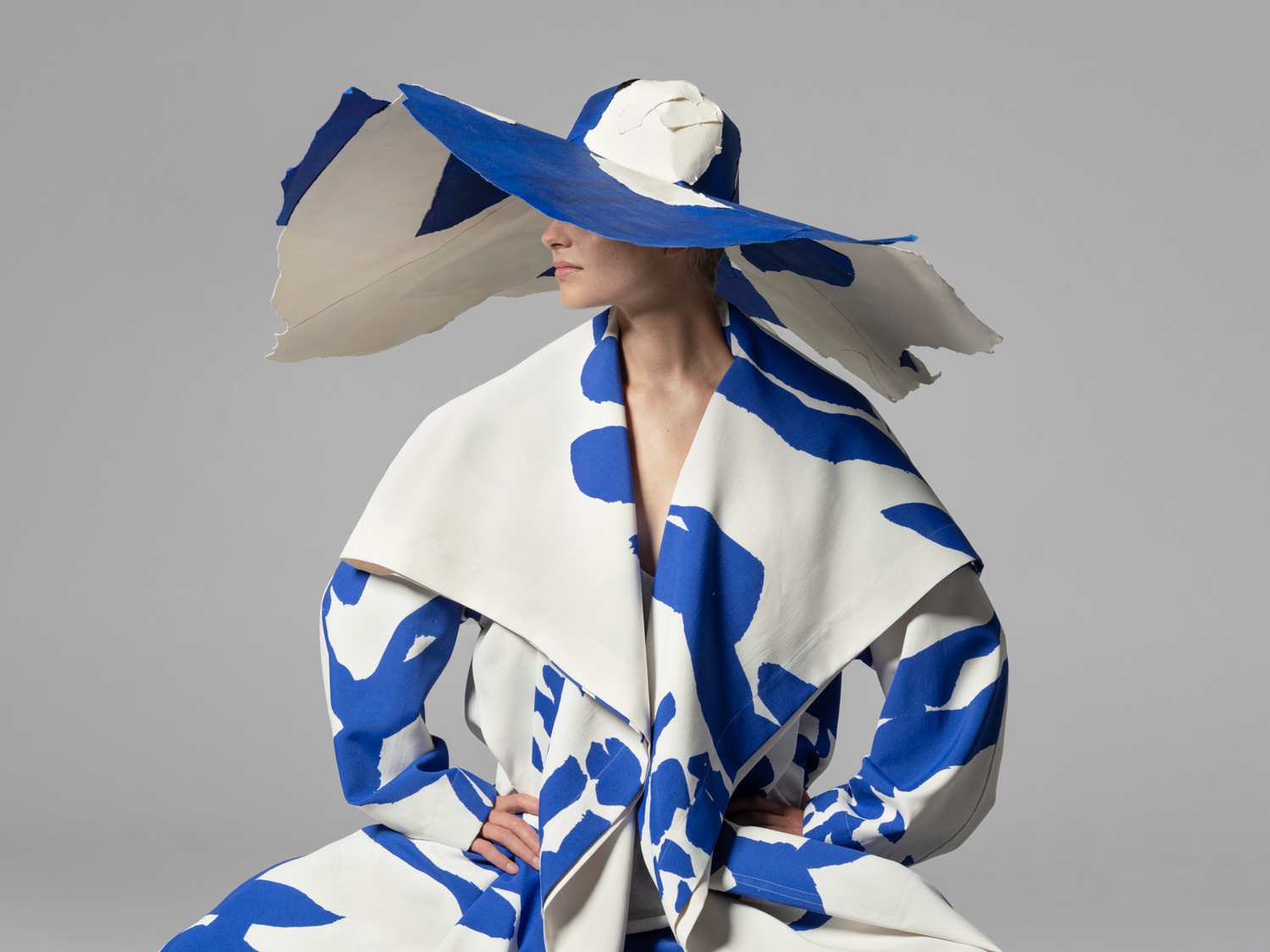On view in Milan at Issey Miyake’s store at Via Bagutta 12 is “Fold and Crease” (April 16–29), created by the Dutch design collective We Make Carpets. For the not-miss exhibition timed to Milan Design Week 2024, a series of installations appear—one in its downstairs exhibition space, as well as several others in showrooms.
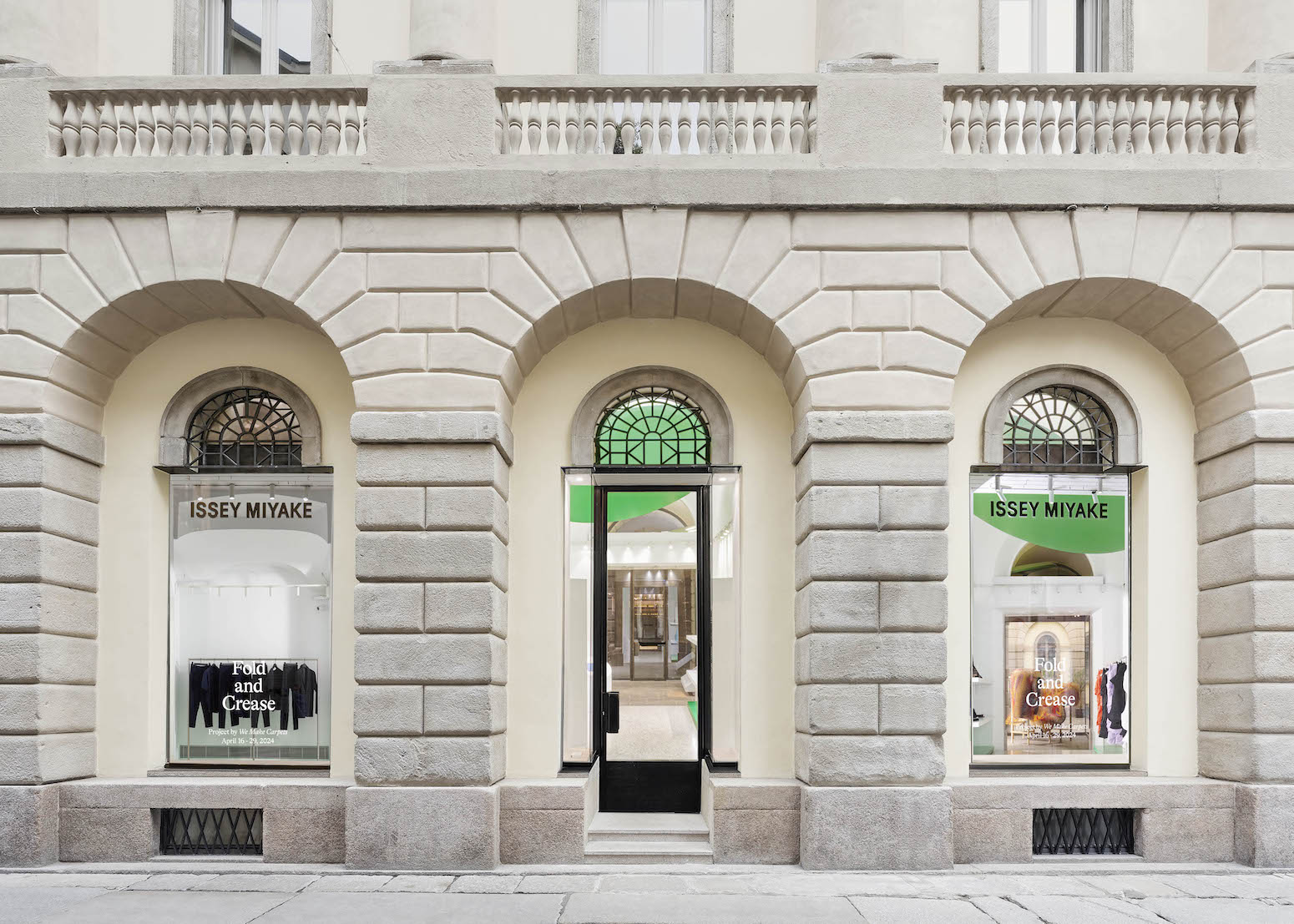
Photo by Valentina Sommariva, courtesy of Issey Miyake.
Created by Bob Waardenburg, Marcia Nolte, and Stijn van der Vleuten, the dynamic artworks follow the team’s brand thread of using everyday materials to pique interest and playfulness. This time, that’s centered on working with small wooden skewers, needles, and pins—all of which are seen puncturing panels and waves of foam. For all three teammembers working five days a week, “Fold and Crease” took nearly four weeks to complete.
Whitewall spoke with the creators behind We Make Carpets to hear how they gained inspiration from Issey Miyake’s fabrics for “Fold and Crease” and why they only make site-specific work.
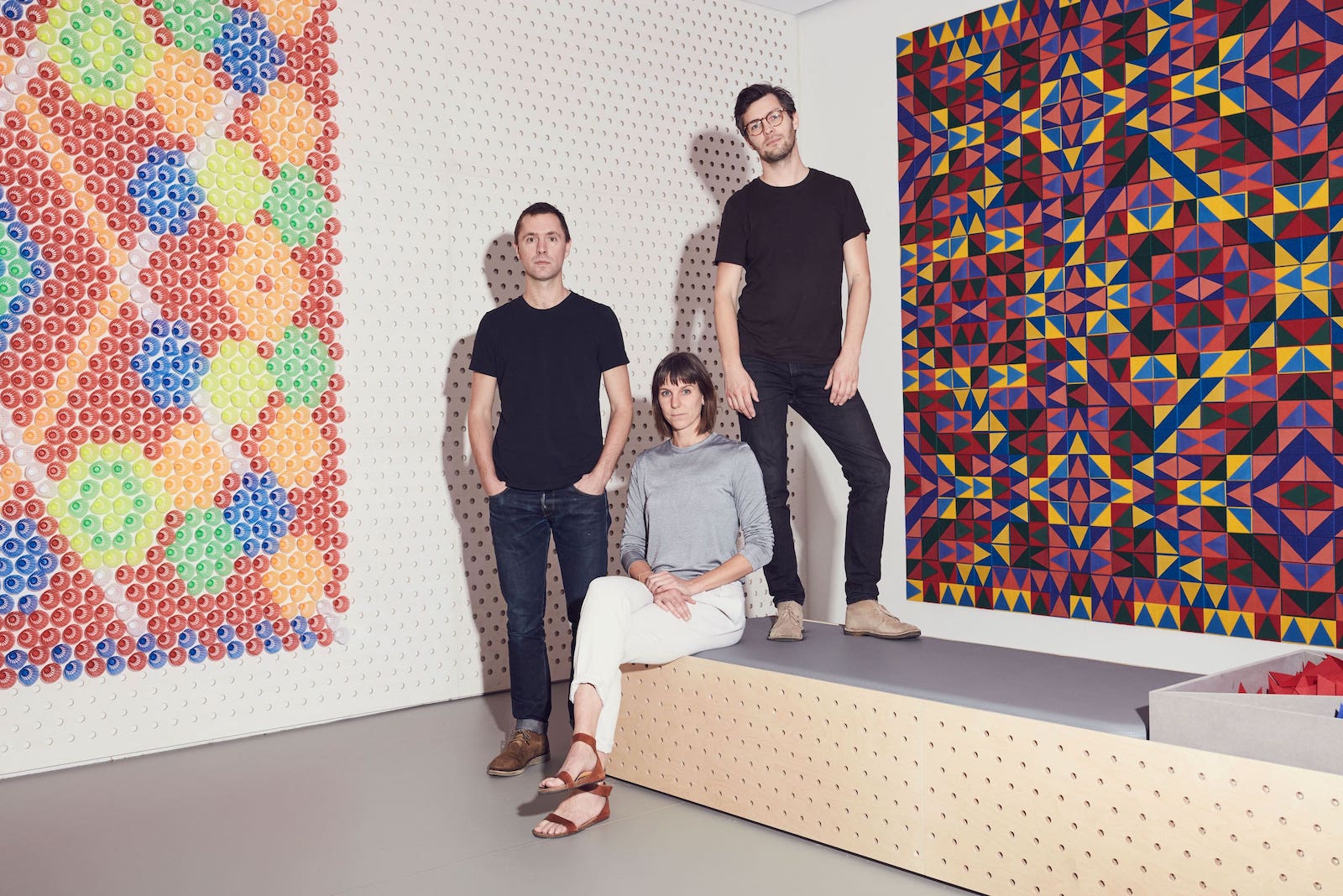
L to R: Stijn van der Vleuten, Marcia Nolte, and Bob Waardenburg; courtesy of Issey Miyake.
The Start of “Fold and Crease”
WHITEWALL: How did “Fold and Crease” come to fruition?
BOB WAARDENBURG: We first established contact with Issey Miyake in 2016 while doing a project at 21_21 Design Sight in Tokyo. Now, we were now given carte blanche to create a new site-specific installation for their store in Milan. Since November, we have been researching the several Issey Miyake brands, the materials they work with, and its production process. We are especially intrigued by the details in texture the pieces of clothing have.
WW: As you mentioned, “Fold and Crease” speaks to the qualities and craftsmanship found in the brand’s clothing. What qualities or details about the craftsmanship specifically inspired the piece? Where do we see them?
MARCIA NOLTE: If you look at some sub-brands—like Pleats Please and A-POC ABLE—you see that the pieces of clothing are not only made with textile, but that the textile itself is fully designed and engineered. With Pleats Please, it is obvious; it is the pleats that create the clothing. With A-POC ABLE, it is a different kind of process that creates all kinds of textures that are endlessly fascinating the more you zoom in. We feel very attracted to this quality. From afar, you see a piece of clothing, but the more you zoom in, the more you discover within the pleats, folds, and creases. the further you research, the more you discover.
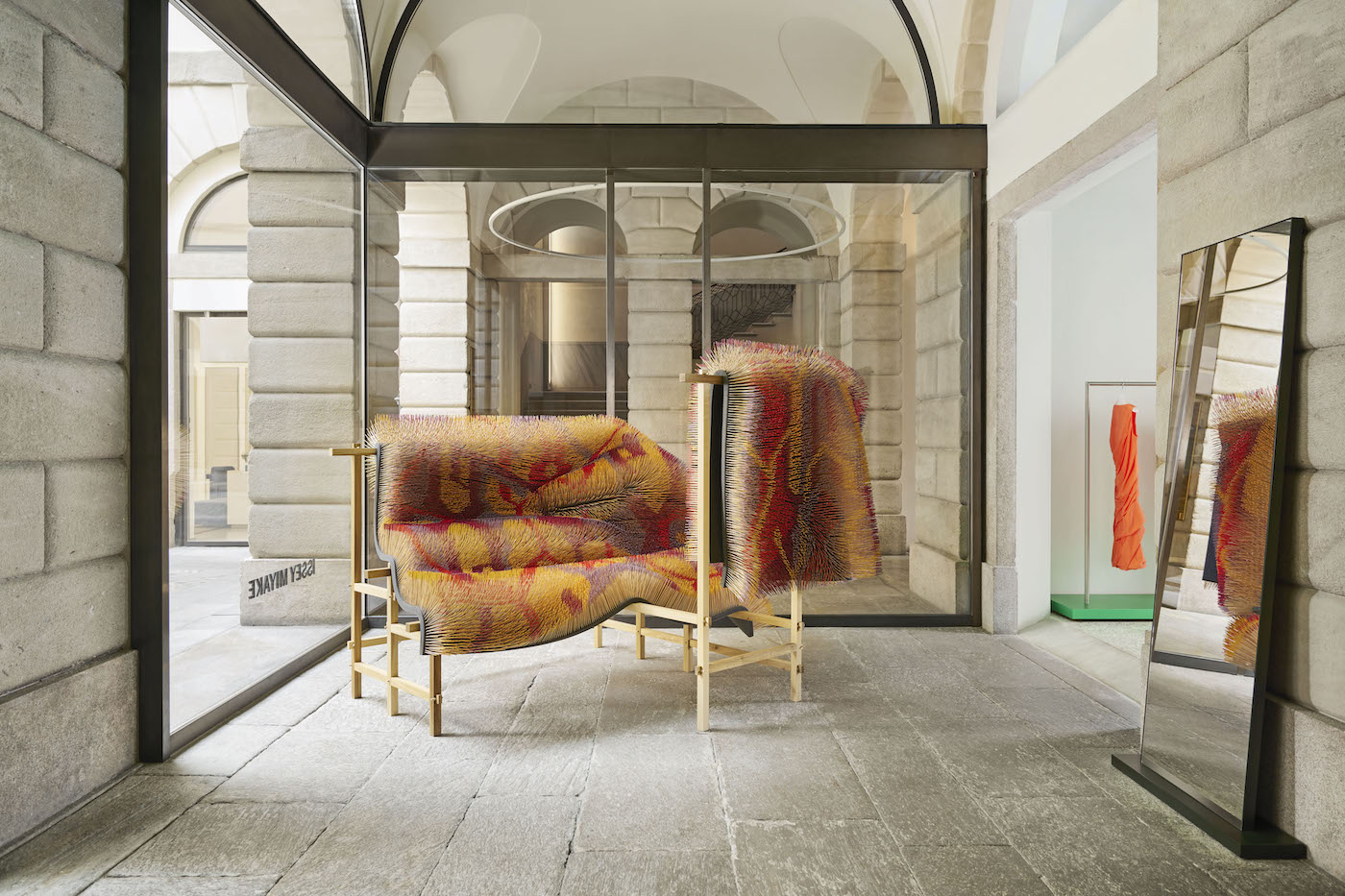
Photo by Valentina Sommariva, courtesy of We Make Carpets and Issey Miyake.
Shared Values of Craftsmanship
WW: Both you and Issey Miyake value quality and craftsmanship. What else do you feel you have in common?
STIJN VAN DER VLEUTEN: We value one thing the most, and that is the love for creating. Seeing creative opportunities and letting that what we make. Both we and Issey Miyake created a universe for ourselves within which we can do whatever we want. This became clear the moment we were asked for this project. It was not a commission, it was a question. If whether we would like to create an installation in their store and we were free to do whatever we wanted.
WW: The installations aren’t woven, but made from large quantities of everyday objects arranged in delicate compositions. Can you tell us about these materials and why these items were chosen?
BW: For this exhibition, we worked with wooden skewers for the big installation and pins for the smaller objects. When doing research, Issey Miyake sent us boxes full of “stuff” taken from their production plants. We were looking for objects with which we felt we could achieve a similar kind of detail and movement that we found in the pieces of clothing—without competing with them. We didn’t want to create a textile or something using textile. We ended up with sewing machine needles and pins. We soon found out that we would need millions of them to create a bigger installation. So, we decided that we would use pins for the smaller works and blow the size up to wooden skewers for the bigger one. In the end, we hand colored 65,000 wooden skewers and stuck 60,000 of them in foam. Almost a kilo of pins were used for the six smaller objects.
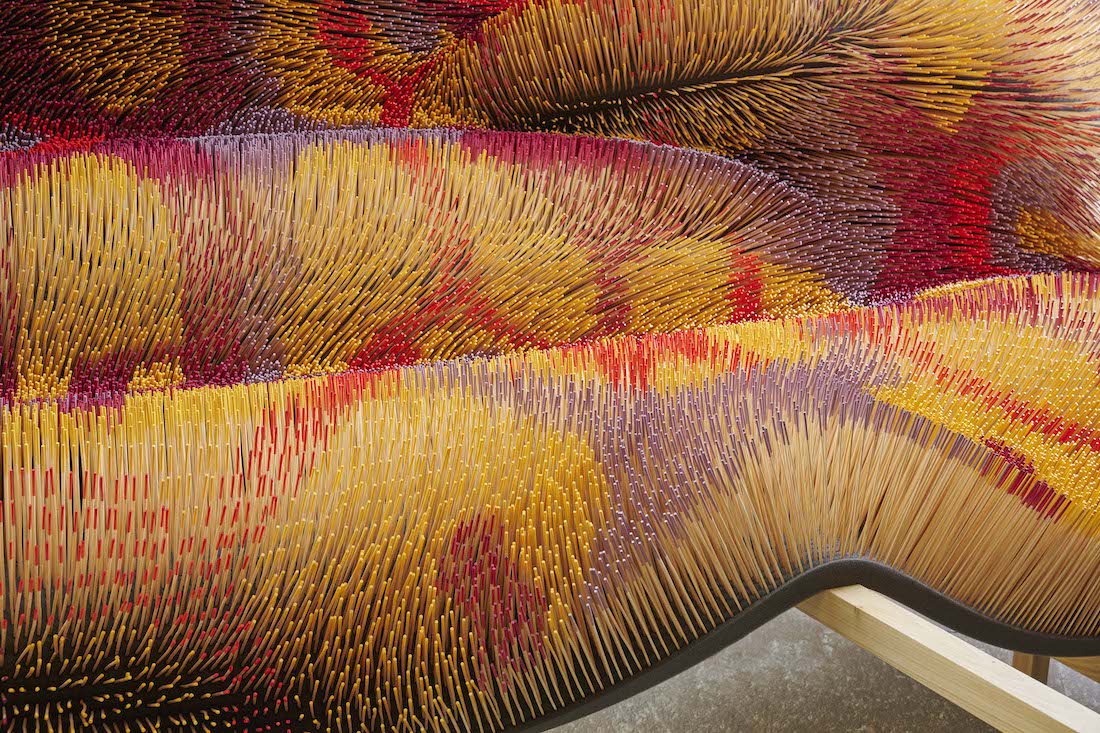
Photo by Valentina Sommariva, courtesy of We Make Carpets and Issey Miyake.
Research for “Fold and Crease”
WW: Your practice is filled with extensive research and development when developing a new project. What was this time like when making “Fold and Crease”?
NM: Our research consists out of multiple stages. We make only site-specific work. This means that the location is one of the most important things. During a location visit we start with the dimensions of the space and use those to determine the dimensions of the work to be. After that, we broaden the circle. We visit the building the space is in, the street, the city, the county even. In this case of course it was also important what else is in the space? What are the products presented, what do they represent, what does the brand represent?
After that, the research becomes intuitive and creative. We are a collective without any boundaries or rules when it comes to what we make and how we make it. We try to think with our hands. Bringing all kinds of stuff and ideas to the studio and experimenting with object, shape, and color. We do this as long as necessary and have complete trust that “the idea” will present itself. Where these ideas come from exactly we don’t know and we don’t care. But we do think that they don’t come sitting at a desk behind a computer. This is what makes the extensive site visits and research so important, it is there that the ideas that later come are formed.
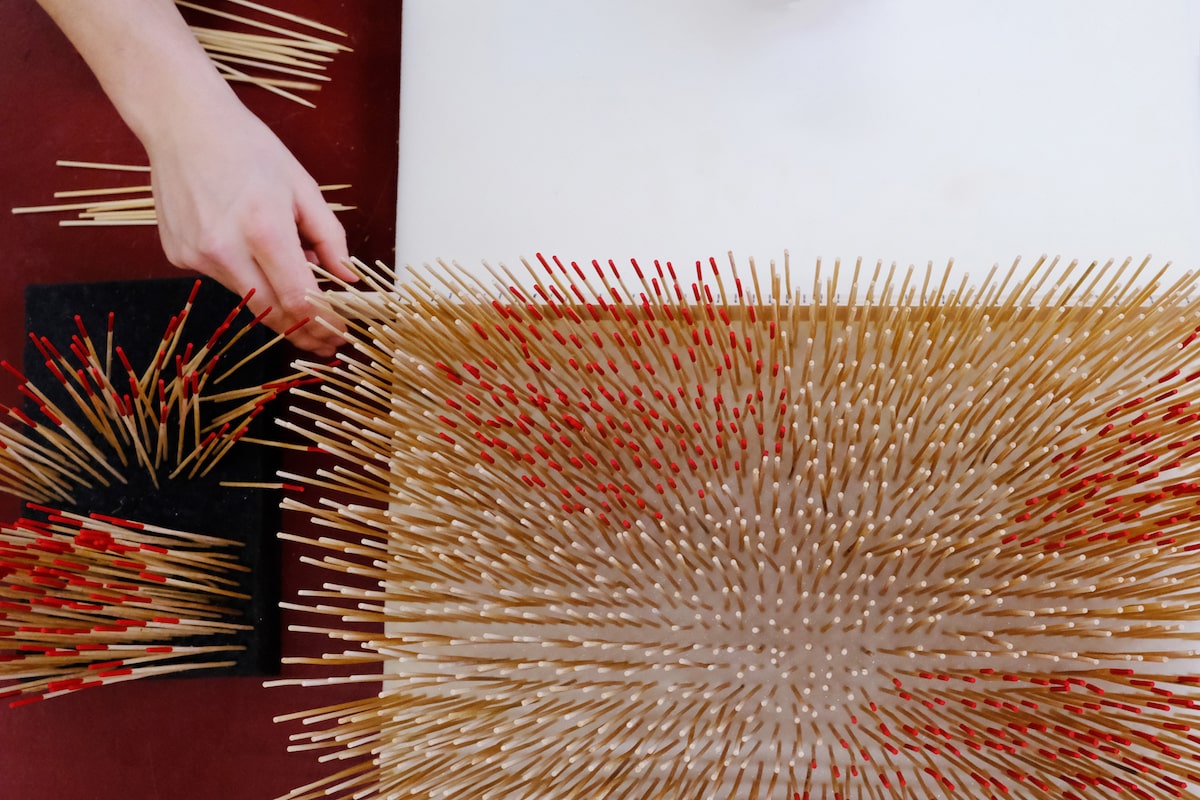
Courtesy of We Make Carpets and Issey Miyake.
WW: You mentioned that with this project, you’re “breaking boundaries between art, design and craftsmanship.” How does showing objects that can be either one of these three, or all of them at once, achieve that?
SVDV: Our installations are always made of everyday materials. These are materials that are already designed. Somebody made choices about color, shape and dimension. Our works itself are not usable and a lot of the time even temporary. So this makes them already artworks that are about design. The other way around, our works often present themselves in the shape of a carpet, a covering or a textile. They show intriguing patterns all of these could be see a conceptual design for… something. When it comes to craftmanship. Every installation we make we work with a different material. All of these materials have their own properties. Very often, we find ourselves developing new techniques to use these materials in installations. This is a very craftsmanship approach to things. While researching how to use a certain material we focus primarily on the technical aspects. All these three things are equally important for us and are done by ourselves. For us, this is the core of our work: we are researching the very nature of ready-made objects in terms of their aesthetic and technical properties. We are not occupied with how the final product should be called. The bottom line is that we don’t make this choice, the observer does.
WW: What are you looking forward to experiencing while in town in Milan?
BW: Italian food!
WW: What are you working on next?
MN: We just finished two permanent works in the Netherlands. We worked the biggest part of 2024 on this project. So first, some rest. After that, we are hoping to return to Saudi Arabia to re-install a work we previously made for an exhibition there in a museum.
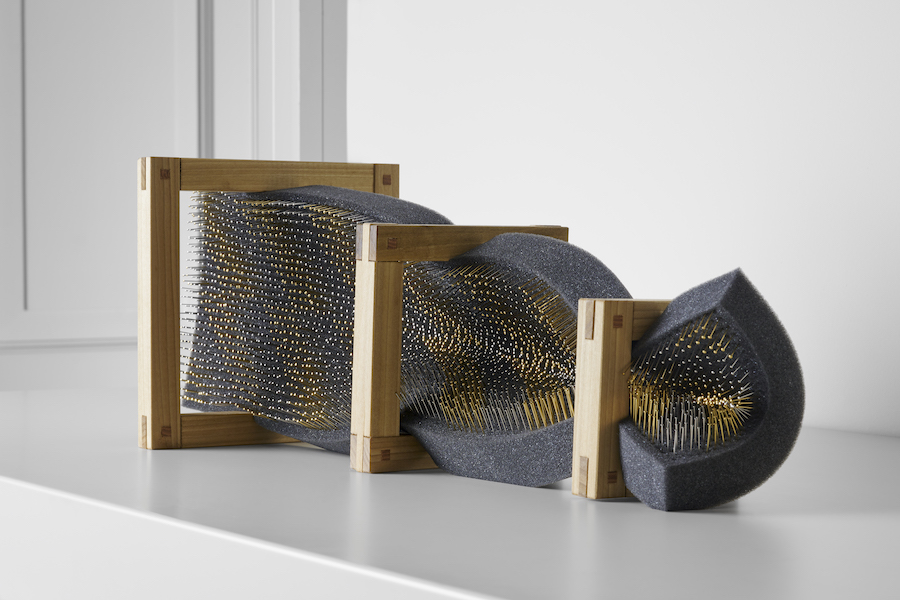
Photo by Valentina Sommariva, courtesy of We Make Carpets and Issey Miyake.




